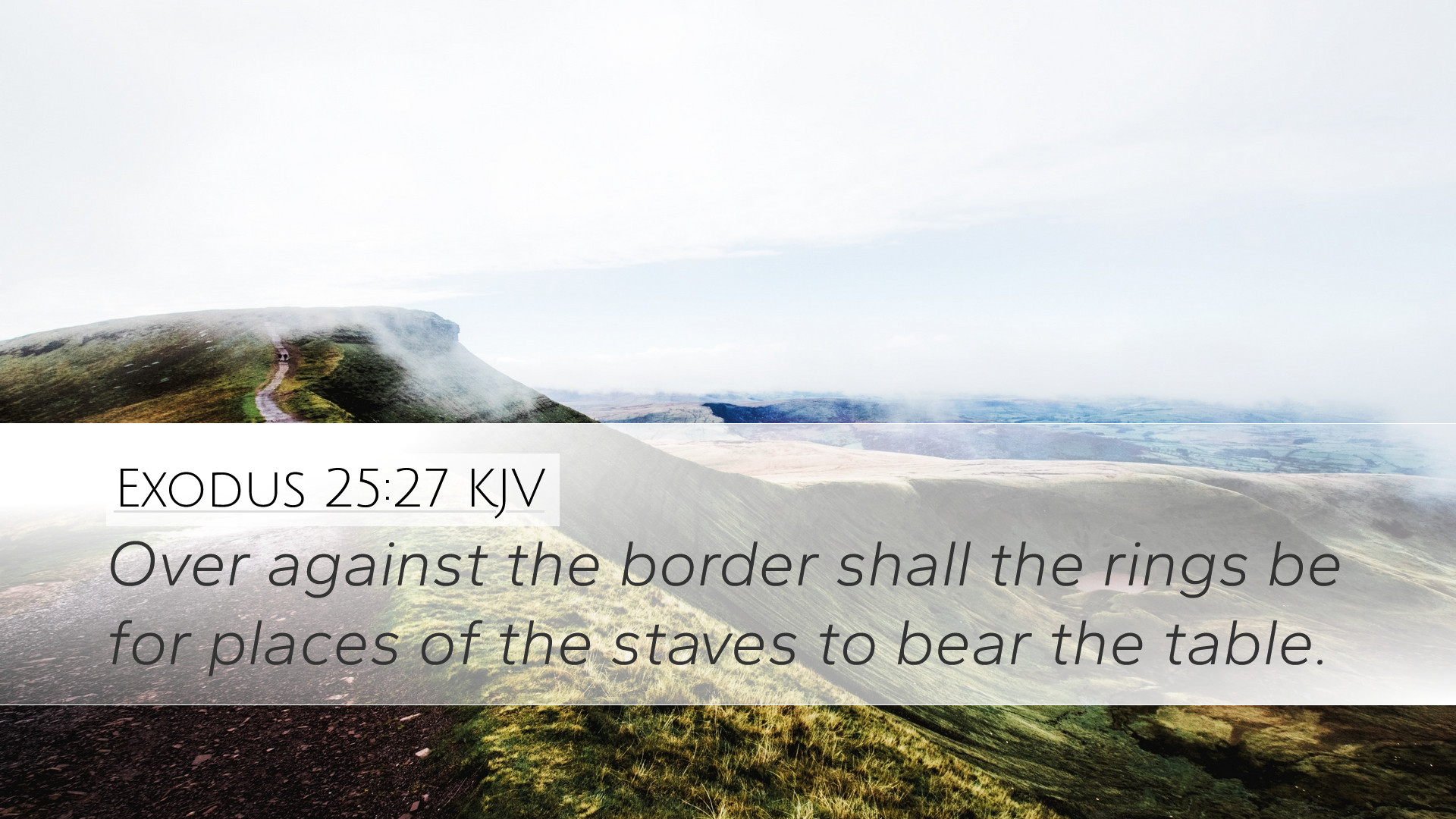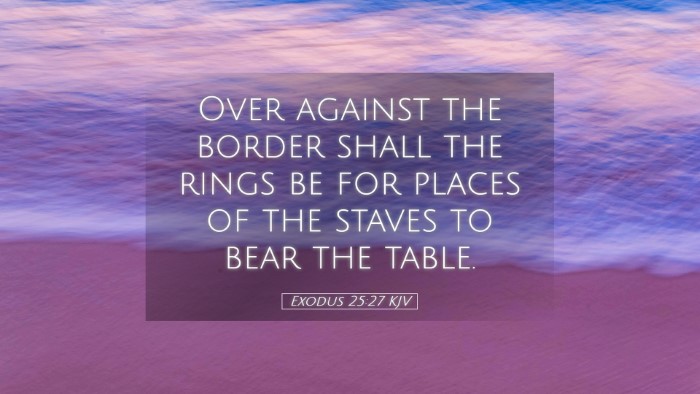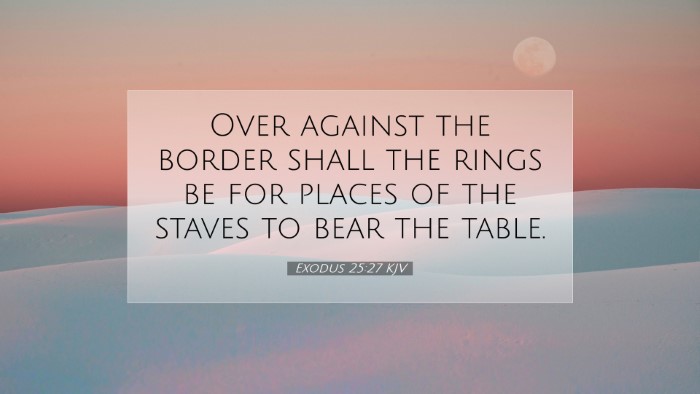Bible Commentary on Exodus 25:27
Verse Context: Exodus 25:27 states, "And the staves shall be in the rings of the ark: they shall not be taken from it." This verse is part of the instructions given to Moses regarding the construction of the Ark of the Covenant, which was to be a sacred vessel housing the tablets of the Law.
Commentary Overview
This verse provides insight into both the physical construction and the symbolic significance of the Ark of the Covenant. The use of staves (poles) allowed for the Ark to be transported, signifying God's presence among His people during their journey through the wilderness.
Insights from Matthew Henry
Matthew Henry emphasizes the importance of the Ark as a symbol of God's covenant with Israel. He notes that the staves were not merely for transport but served to remind the Israelites of the sacredness of God's presence. Henry points out that the staves remaining in the rings of the Ark signify that God's presence is not confined to a physical location; rather, it travels with His people.
- Symbol of Divine Presence: The Ark served as a tangible representation of Yahweh's presence among His people.
- Immovable Nature: The staves were to remain permanently attached, highlighting the enduring and unchanging nature of God's covenant and His commitments.
- Preparation for Movement: The readiness to move at any moment reflects the Israelites' reliance on divine guidance during their journey.
Insights from Albert Barnes
Albert Barnes provides a detailed analysis of the construction elements. He interprets the staves' permanence in the rings as indicative of the ark's holiness. According to Barnes, the Ark adapts to the needs of the people—signifying that God is always ready to guide His people wherever they go.
- Holiness of the Ark: The Ark was not to be handled casually; instead, it required reverence, symbolized by the staves.
- Practical Consideration: Barnes notes that the staves allowed for safe and respectful transport, recognizing that the Ark contained the Law.
- Theological Significance: The constant presence of the staves suggests that God's covenant requires an ongoing commitment from His people.
Insights from Adam Clarke
Adam Clarke explores the practical implications of the design. He posits that the staves underscore the need for holiness in crossing boundaries, whether physical or moral. Clarke emphasizes that the staves' presence encourages believers to consider their own lives in relation to the holiness of God.
- Transcendence of God: Clarke highlights that God is always with His people, beyond their failures and sins.
- Symbol of Guidance: God’s presence, represented by the Ark, leads the faithful through life’s uncertainties—mirrored in the carrying of the Ark.
- Call to Reverence: The ongoing nature of the staves calls upon believers to treat sacred matters with utmost reverence.
Practical Applications for Today
This verse and its accompanying insights present several practical applications for contemporary believers, pastors, and scholars:
- Awareness of God's Presence: Just as the Ark represented God's presence, believers are reminded to remain conscious of God in their lives and decision-making processes.
- Guidance in Leadership: Pastors and church leaders can reflect on how they guide their congregations, ensuring that their guidance is rooted in the principles God has established.
- Commitment to Holiness: The permanence of the staves urges today’s Christian community to live lives reflecting God's holiness and to carry that holiness wherever they go.
- Heritage of Faith: Just as the Ark was central to the Israelites' identity, today's believers are called to recognize their identity in Christ and walk confidently in their faith.
Conclusion
Exodus 25:27 encapsulates profound theological and practical implications through its instruction regarding the Ark of the Covenant. Understanding the significance of the staves encourages a deeper appreciation for God’s promise and presence among His people. As modern believers reflect on this verse, they are invited into a transformative relationship with God, recognizing that His covenant with humanity is enduring, guiding, and fundamentally holy.


